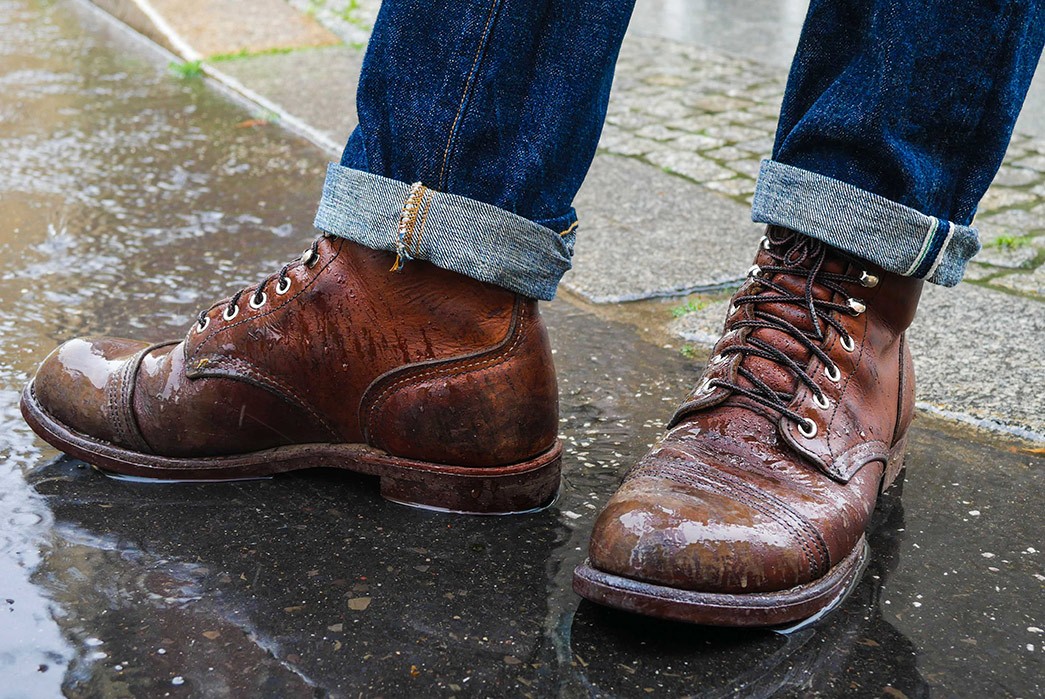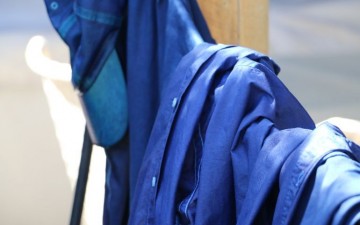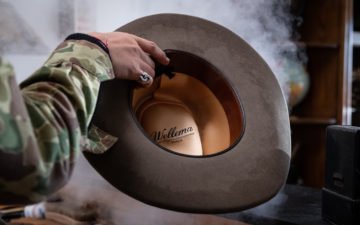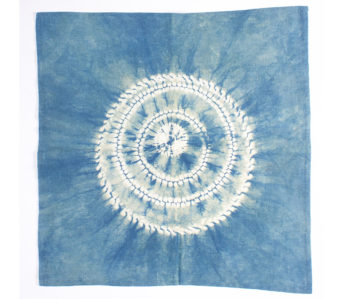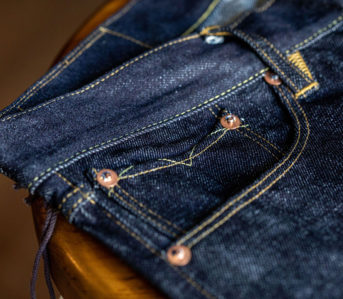Winter is a battle against an array of elemental forces, and a pair of leather boots can form part of a solid defense against what Mother Nature has to throw at us. But when it comes to caring for your leather footwear in the winter, even the expertly-crafted boots and shoes we showcase here at Heddels will need some protection when the harshest weather conditions set in.
So, with winter on the horizon, we’re giving you the lowdown on how to protect and care for your leather shoes from the likes of rain, sleet, and snow.
How can rain and snow damage your leather shoes?
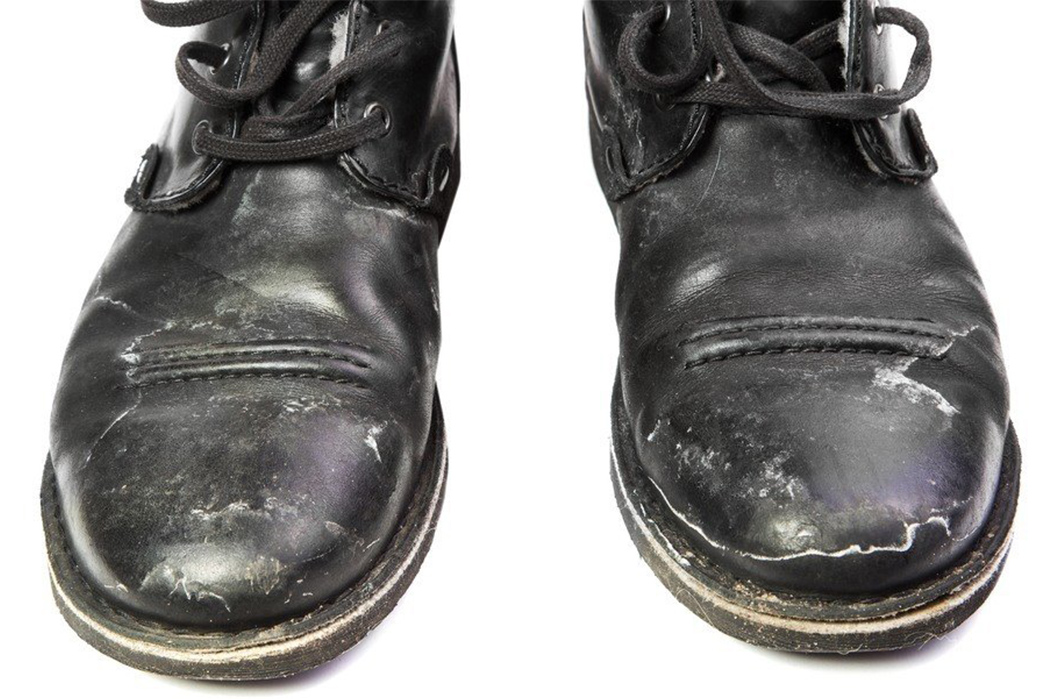
Salt damage on a pair of leather boots via Boot Mood Foot
Rain and snow can damage leather in a variety of ways. When water comes into contact with leather, it forms temporary bonds with some of the oils in the hide. When the water evaporates, some of these oils are lost. The effect this reaction will have on your leather shoes depends on the type of leather and the level of water exposure. Here are the most common ways that rain and snow can damage your leather shoes:
- Water marks and discoloring – Rain and snow can leave small areas of water exposure on your leather shoes known as water marks. These marks can remain after the leather has thoroughly dried and are difficult, if not impossible, to remove. The same goes if your leather shoes become soaked, however, the discoloring effect is on a larger scale.
- Stretching – If a bout of rain or snow completely soaks your leather shoes whilst you’re wearing them, the leather may stretch. When wet, some leathers become soft and supple, meaning any pressure can cause the leather to stretch or lose its shape.
- Dehydrating – It sounds counterintuitive, but water can strip some of the oils found in leather and cause the leather to dry up. This can make your leather shoes more brittle and susceptible to creasing, or worse—splitting.
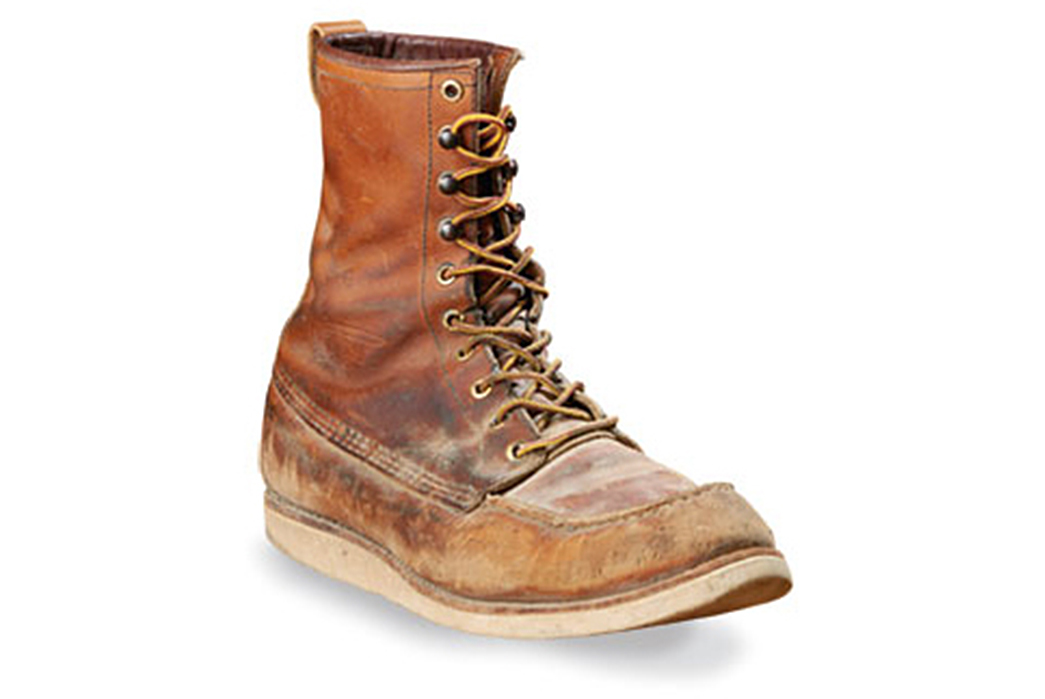
A damaged Red Wing Moc Toe boot via Red Wing Shoes
Road salt is another seasonal hazard to your leather footwear. The road salt in the snow can dissolve into your leather shoes, leaving salt stains. If left untreated, the salt can permanently dry the leather which can cause cracking, loss of texture, and even bubbles.
Leather Protection
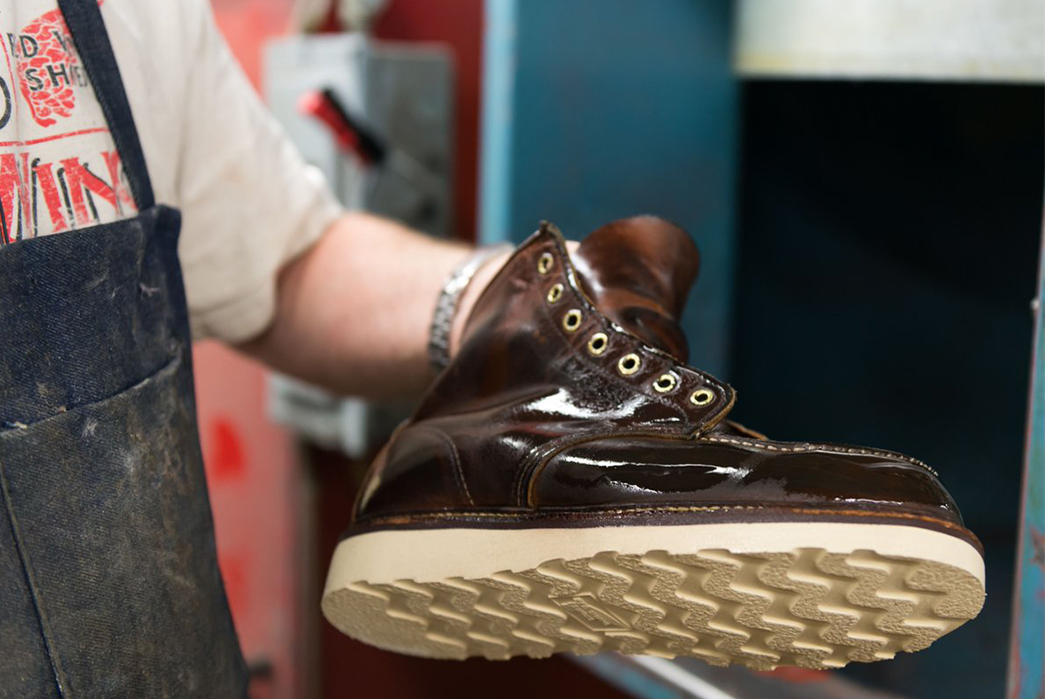
Image via Red Wing Heritage
When it comes to protecting your leather shoes from the winter elements, prevention is certainly better than cure. Sadly, any oil coatings or pre-purchase treatments of your leather shoes will not last forever, and all leathers will need to be re-treated to keep them in tip-top shape.
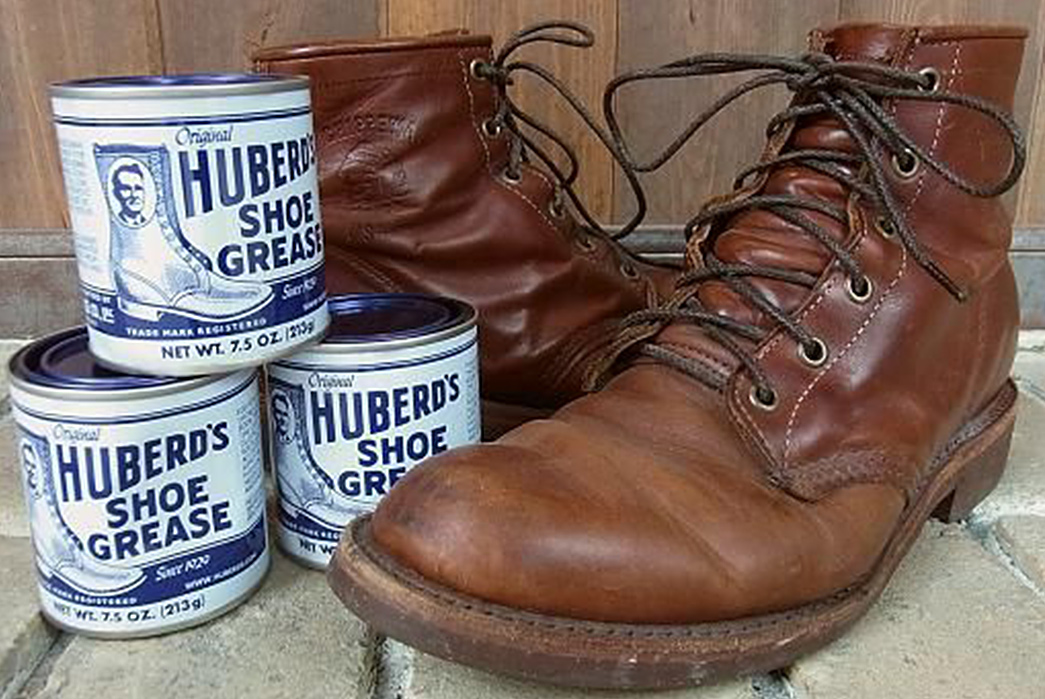
Image via Styleforum
For thick, oil-tanned leather found on work boots and the like, conditioning the leather with oil or conditioner is the key to maintaining its water-resistant properties. Applying conditioner is a piece of cake: ensuring your leather shoes are clean and dry, simply grab a clean piece of cloth like an old t-shirt, dab it into some oil/conditioner and work it into the leather. You will need to re-treat your leather shoes every so often depending on how hard and how often you’re wearing them.
Some reputable oils and conditioners for oil-tanned leather include:
- Red Wing Mink Oil
- Red Wing All Natural Leather Conditioner
- Huberd’s Shoe Grease
- Obenauf’s Heavy Duty LP
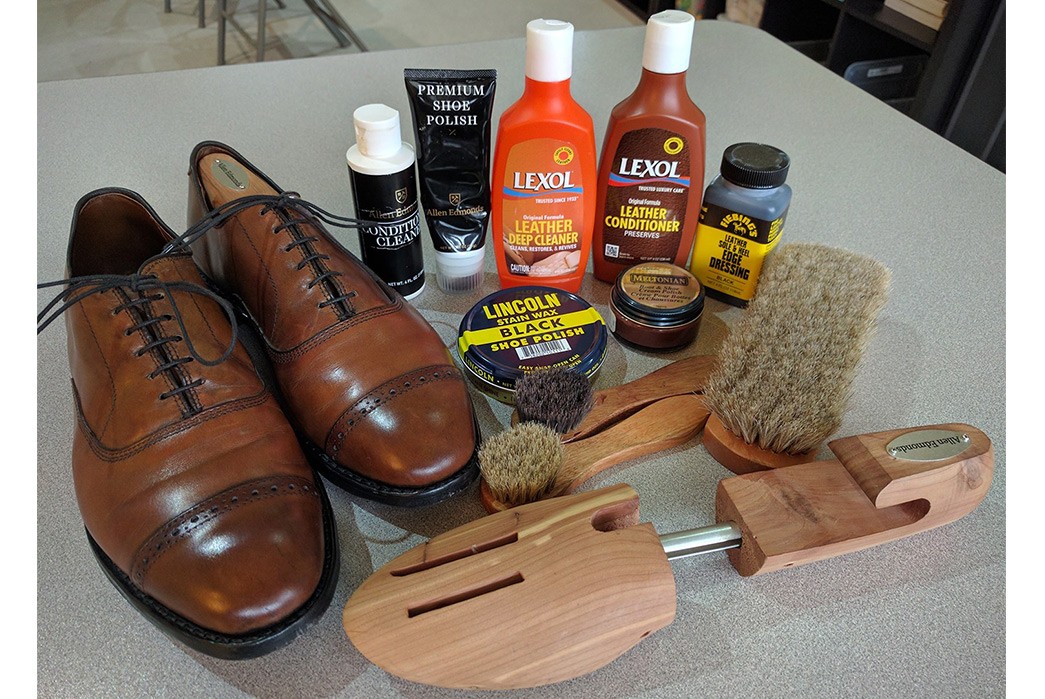
A pair of Allen Edmonds shoes and an array of care products via Half Soles
When it comes to smooth-finished leather found on derbies and other dress shoes, you want to go for a good ol’ wax-based shoe polish, ensuring any dyes in the polish match your leather shoes.
Some good quality polishes include:
- Angelus Perfect Stain Shoe Wax Polish
- Saphir Madaille D’or 1925 Pate De Luxe Wax Shoe Polish
- Lincoln Stain Wax Shoe Polish
For suede and roughout leathers, no conditioner is strictly required. Instead, a water-repellent spray will help to keep your leather shoes in check by leaving any water, salt, or grease on the surface of the leather where it can be wiped away. Be sure to choose a high-quality repellent spray such as Saphir’s Super Invulner Waterproofing Treatment.
Some roughout leathers can be also be treated with oil or conditioner if it becomes dry, but always seek advice from the manufacturer or a reputable cobbler.
General Care and Other Solutions
As well as treating your leather shoes with the right products to get them winter-ready, here are some further tips on caring for them on a daily basis.
- Let them dry – Allowing your shoes to dry naturally and in their own time is of paramount importance in terms of caring for the leather. Set your leather shoes in a cool, dry place until they are completely dry. Resist all temptation to place them under a heater or hit them with a hairdryer. Doing so will cause the leather to dry out.
- Wipe them down – Before you set your shoes or boots out to dry or simply kick them off for the evening, wipe them down with a soft cloth to remove any excess water, salt, and dirt. This will help to prevent these substances from penetrating the leather as it dries and makes cleaning and conditioning a lot easier.
- Brush them – Once dried, rubbing down your leather shoes with a soft nylon or horsehair brush will also remove any excess debris.
- Wear Galoshes! – If it’s absolutely crazy out there, maybe it’s time to accept that your $350 + leather shoes may need shielding from the carnage. All jokes aside, a pair of Galoshes or other rubber over-shoe will seriously protect the upper of your leather shoes. You can also obtain Galoshes with spikes or extra grip to assist in slippery conditions.
- Read our Complete Guide to Cleaning and Caring for your Boots – This article features more comprehensive guidance on cleaning and caring for leather shoes.

